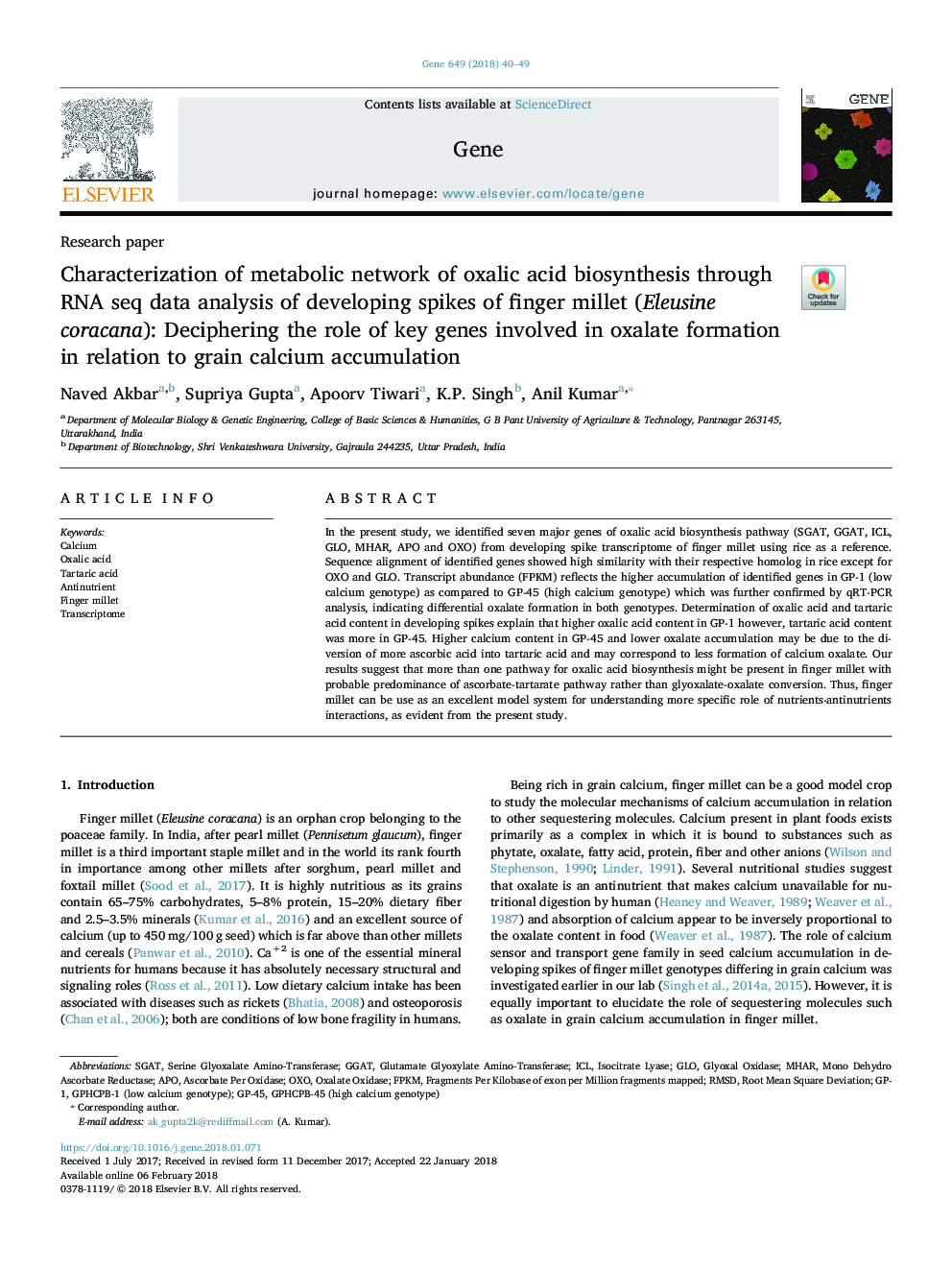| Article ID | Journal | Published Year | Pages | File Type |
|---|---|---|---|---|
| 8645487 | Gene | 2018 | 10 Pages |
Abstract
In the present study, we identified seven major genes of oxalic acid biosynthesis pathway (SGAT, GGAT, ICL, GLO, MHAR, APO and OXO) from developing spike transcriptome of finger millet using rice as a reference. Sequence alignment of identified genes showed high similarity with their respective homolog in rice except for OXO and GLO. Transcript abundance (FPKM) reflects the higher accumulation of identified genes in GP-1 (low calcium genotype) as compared to GP-45 (high calcium genotype) which was further confirmed by qRT-PCR analysis, indicating differential oxalate formation in both genotypes. Determination of oxalic acid and tartaric acid content in developing spikes explain that higher oxalic acid content in GP-1 however, tartaric acid content was more in GP-45. Higher calcium content in GP-45 and lower oxalate accumulation may be due to the diversion of more ascorbic acid into tartaric acid and may correspond to less formation of calcium oxalate. Our results suggest that more than one pathway for oxalic acid biosynthesis might be present in finger millet with probable predominance of ascorbate-tartarate pathway rather than glyoxalate-oxalate conversion. Thus, finger millet can be use as an excellent model system for understanding more specific role of nutrients-antinutrients interactions, as evident from the present study.
Keywords
Related Topics
Life Sciences
Biochemistry, Genetics and Molecular Biology
Genetics
Authors
Naved Akbar, Supriya Gupta, Apoorv Tiwari, K.P. Singh, Anil Kumar,
